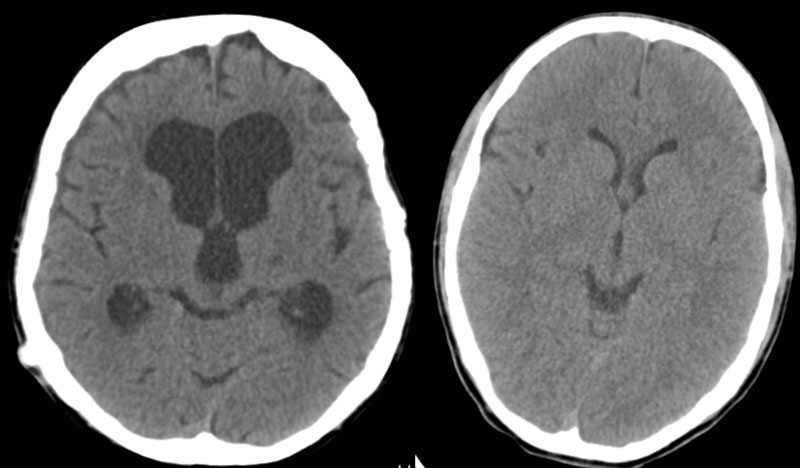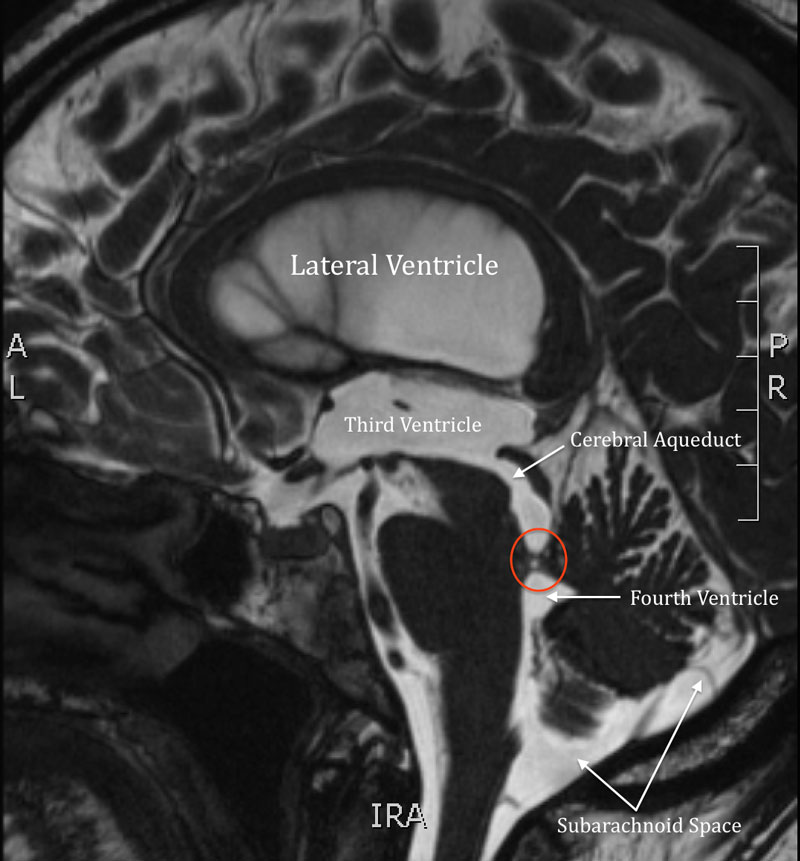What is Hydrocephalus?
Within the brain are fluid filled cavities called ventricles. Cerebrospinal fluid (CSF) is synthesized in the ventricles by the choroid plexus-frondlike structures which are attached to the ventricular wall. CSF circulates from within the ventricles to the subarachnoid space surrounding the brain. The fluid suspends the brain and spinal cord in the cranial cavity and spinal canal respectively. Ultimately, CSF is reabsorbed into the venous system via structures called arachnoid granulations.
Hydrocephalus defines a condition whereby the ventricles become enlarged as a result of a defect in the circulation or reabsorption of CSF (Figure 1). Tumors, blood, inflammation and congenital defects (Figure 2) may obstruct ventricular flow. Alternatively, blood, infectious or inflammatory conditions may impede reabsorption at the arachnoid granulations.

Figure 1
Left axial CT image shows large lateral and third ventricles when compared to normal ventricles seen on axial CT on the right.

Figure 2
Sagittal MR image with ventricular system annotated indicating position of the lateral, third and forth ventricles. The ventricular system and cerebral aqueduct show hydrocephalic changes resulting from a congenital web-like obstruction at the upper fourth ventricle (red circle).
Hydrocephalus Treatment Options
Hydrocephalus treatment most commonly involves diverting fluid surgically. If hydrocephalus is felt to be reversible, temporary drainage measures are sometimes instituted by placing an External Ventricular Drain (EVD).
In circumstances where a more permanent hydrocephalus treatment is indicated, diversion may be achieved by a variety of procedures involving the implantation of small silastic catheters, i.e. Ventriculo-peritoneal, Ventriculo-atrial or Lumboperitoneal shunt. Alternatively, the obstruction of normal flow may be bypassed by endoscopic third ventriculocisternostomy (ETV) thereby altering the anatomy of the ventricular system endoscopically.

